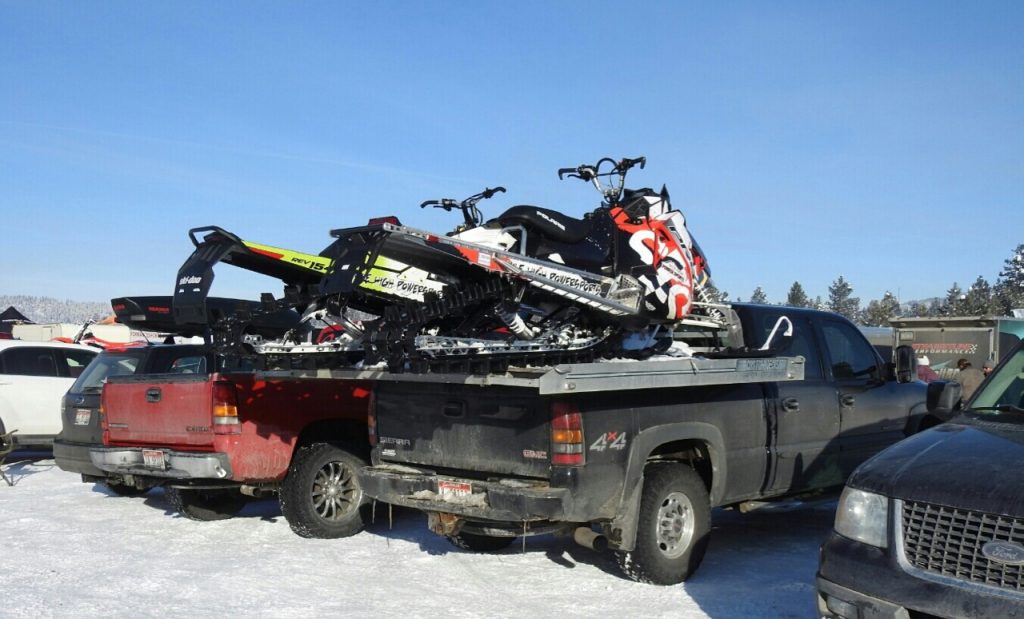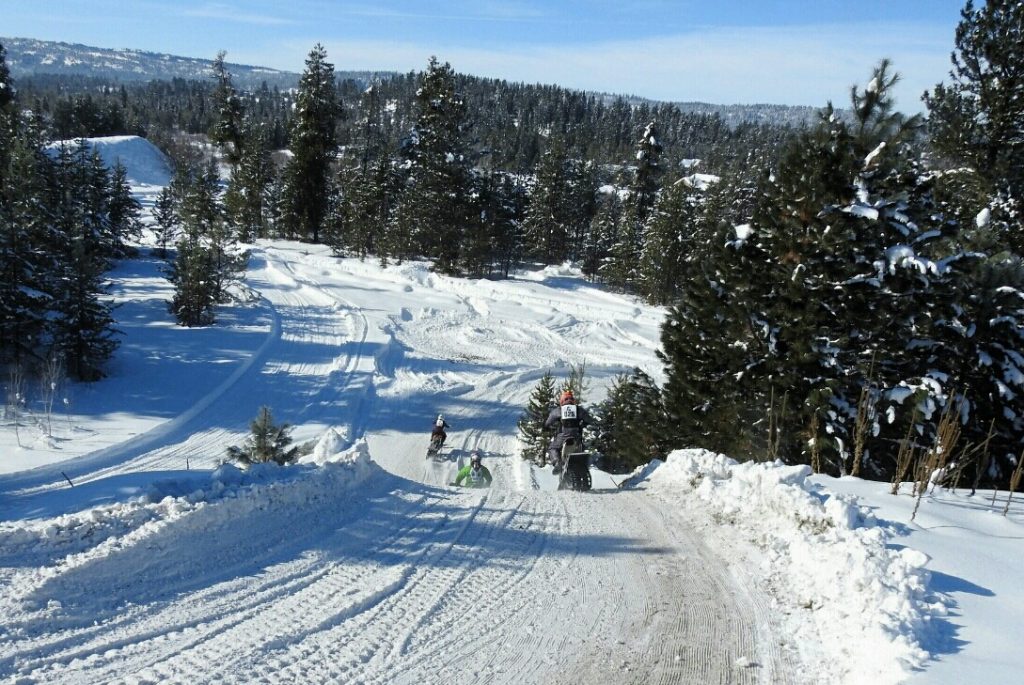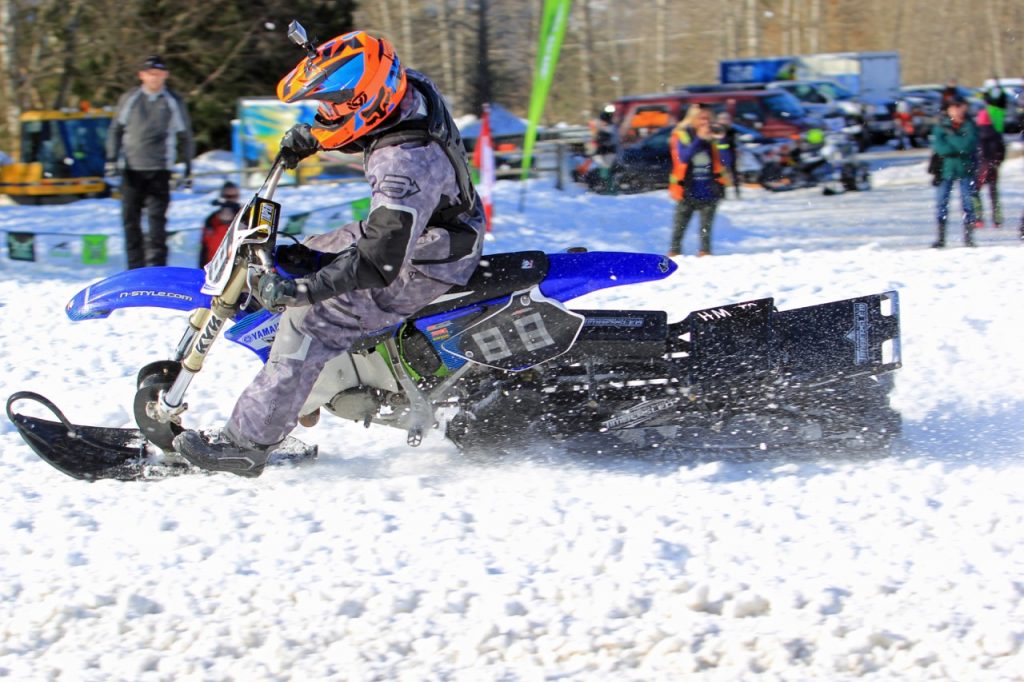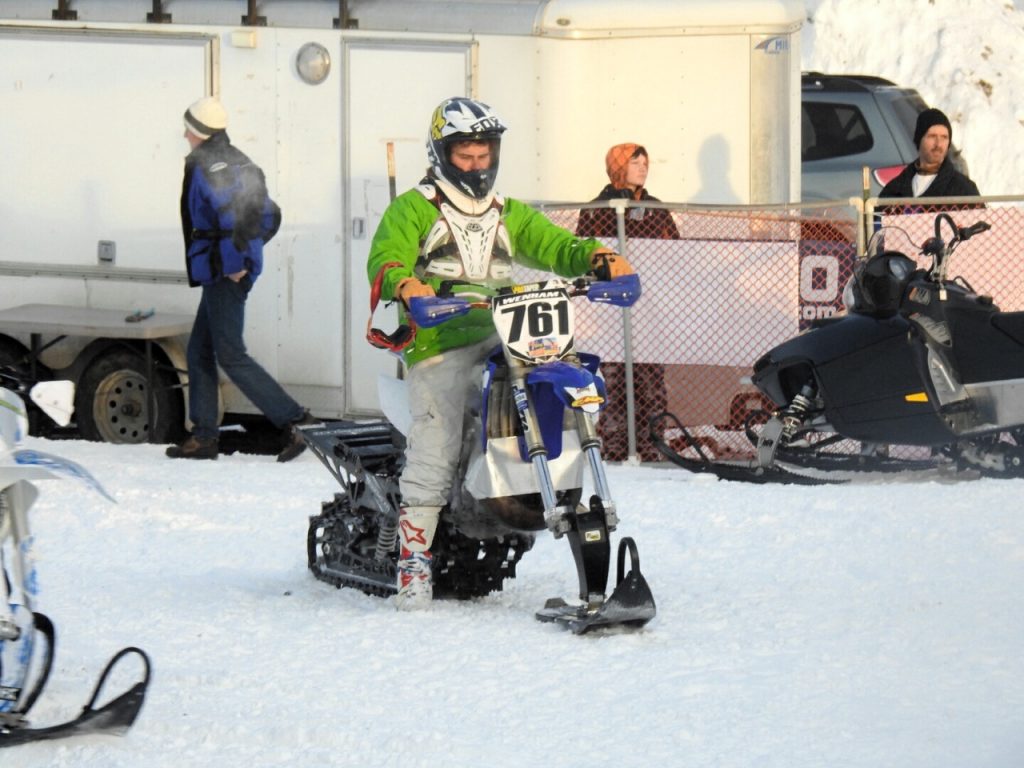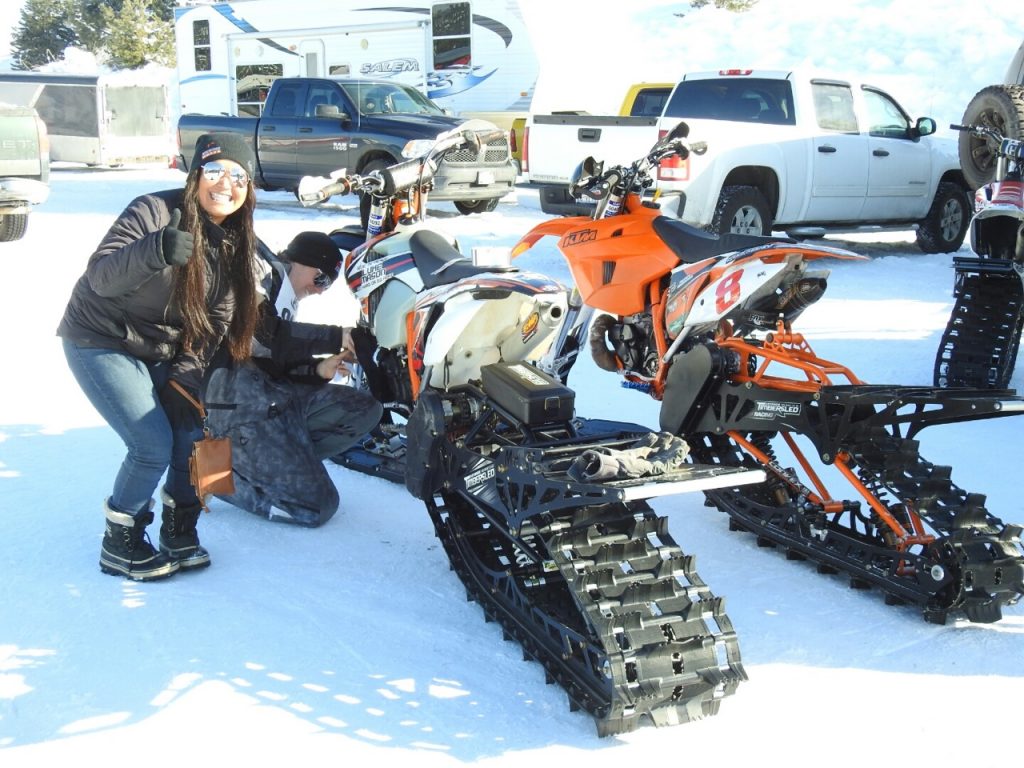A chance encounter with snowbike racing has become an Aussie's obsession.
This feature was first publish in ADB issue #461 – February 2018.
Words: Shannon Mason
Photos: FIONA MONTGOMERY & Nancy Jenson
I was sitting at home planning my trip to North America when I saw a snowbike race happening in McCall, Idaho. Curious I was, so I explored good old Google and I was ecstatic with what I found. Before I headed over I had ordered a new KTM 300XC and Timbersled Short Track kit … but I didn’t tell the missus until she enquired about the $20,000 missing from the account. Sometimes it’s better to ask for forgiveness rather than approval, and it was well worth the pain in this case.
In January 2016, I rode a snowbike for the first time. We started the day driving out near a ski area in Idaho and unloading the bikes in a nice crisp -18deg. I didn’t care. I don’t think I could feel the cold, I had so much adrenaline.
As I rode down the trail I realised it had to be the worst handling bike I’ve ever been on. The ski was darting around, the rear track was stiff on corners and trying to make the bike stay upright. What the … The second I got off the hard-packed snow and into powder, everything changed. It just turned into an effortless, floating feeling.
Imagine riding on an ocean of loamy sand where you can pick nearly any line for as far as the eye can see. If you ever stack, you’re landing in a soft, cold pillow. It’s pure happiness. At times the extra-soft snow leads you into snow-drowning moments, like when you catch a log buried under the snow, but you still enjoy every minute of it. It’s truly God’s playground and snowbikes rule in it.
DIRT VERSUS SNOW
Other than the fact that you’re riding metres above the ground on a pile of snow, the snowbike handles similarly to a dirtbike in terms of cornering and clutch control. The rest is a new game. The power delivery is not as potent so you twist that throttle pretty hard all day, and it’s an awesome feeling, especially on a two-stroke.
In terms of braking, as you may have realized, there is no front wheel, so no front anchor. There is a disc brake in the rear track system which can be hooked up to either the pedal or the front-brake lever. I opted for the pedal – not only does my brain feel better about it, but the ability to quickly tap the brakes while at full speed into a berm is worth it.
Most riders actually set it up to the lever. The benefit of that set-up is that the brake lever remains clear, while the pedal can get jammed up with ice on deep powder days, making braking a little difficult.
RACING
At the races there are a wide variety of riders participating. There’s the guys like me with backgrounds in motocross and/or enduro, a bunch of pro riders from both Canada and the U.S., and then some guys and girls who’ve never raced on dirt and are now competing in the snow for the first time.
Overall there are about 400 racers across the north-western U.S. and British Columbia/Alberta in Canada but only a handful are able to get to all the races, with usually 50 to 70 competing.
The first race I competed in was back in McCall where I believe I became Australia’s first snowbike racer. With three days of practice up my sleeve I rolled into the event with some new buddies and saw the track for the first time. What a dream, a mostly natural-terrain track groomed on four feet of fresh snow on top of a golf course – yep – those bunkers and mounds we all dream of using as little jumps and berms were actually being used as a base for a national snowbike race. Epic, what a great community to allow it!
The format involved two heats, a Last-Chance Qualifier and finals. The winner of each heat went straight to the A Main final. From the LCQ, second and third went to B Main, third and fourth to C Main etc. In the LCQ, I ended up holeshotting past Ronnie Renner and leading for the first lap, before being overtaken by another rider and finishing in second, which put me in the B Main final. A crappy start, which saw me getting roosted by powder and chunks of ice, landed me an eighth in the final, which was 20th overall out of 56 riders. Not bad for a lad from Central Queensland, first time in the snow…
The 2017 Canadian Nationals in Revelstoke were run like a motocross, with each class having two races and, to make it really exciting, they used the local motocross track and extended it. Now we suddenly were faced with 60-70ft tabletops and a huge step-down.
On my first practice lap I realised that continuing to use the KTM would mean injury due to the fork being far too soft for the big hits. So we rolled out the Yamaha YZ250 (a bike I bought my missus as a sorry for getting my one) which was geared low for deep powder and I hit the track again.
The suspension was far stiffer and handled beautifully … shame it had no brakes – the master cylinder was leaking. And to make things more interesting, the low gearing meant I was pinned in sixth to make the 70ft jump, preloading with all my might and only just scraping the down-ramp. Oh well, better than hurting with every landing on the KTM.
I ended up managing a second in the Intermediate class. Later in the night the event turned into a bit of a snow flurry party with temps dropping to around -15deg. Finally, the Shootout started and I raced back to the pit area to get the old YZ warmed up and ready for some one-on-one night racing.
Leaving the YZ outside with temps dropping and no carb heater meant my sighting lap was spent spluttering around the track as if my tank was full of water. Not good. I quickly realised the 250 was not up for the night challenge… so, out came the softly suspended KTM again, with a quick 30-second rev on the pipe to warm it up, it was ready for action. I lined up for the first race and managed to holeshot and win. Then I managed to do it another three times. I won the Amateur shootout but then they decided it was only fair to line me up against the Pro class winner, Brock Hoyer, who just happens to be one of the original snowbike racers and a poster boy for the sport!
It started with a quick fist bump for good luck and the flag dropped. I pinned it all the way to the corner and I couldn’t believe it when I came out of that corner in the lead. How did I manage that? Brock’s bike is well known for putting out over 70hp, with my 300 having maybe 50hp to offer me after about 300 hours of punishment.
And the fact that Brock is the best rider in the sport, who is sponsored by both Yamaha and Timbersled.
Anyway, I continued, I thought “shit I’m out front, let’s see how far I can hold it!” Well that “top-dog” feeling passed in Turn Three when I went to click third and found neutral … that half-second hiccup was all Brock needed to blow by me on the whoops. When we finished the race I was so excited, but found out that Brock had stalled on the line. Oh well, felt good at the time.
EXPLORING
Although there is a handful of snowriders who love the racing side, the most exciting part of riding these bikes is to explore the back country. We spend our days travelling as far into the mountains as possible by truck, then ride another 15 to 20km into the white wilderness, then use that point as a base for a day of riding pleasure.
Some days you don’t even know where you are after traversing three different mountain ranges over 100km … which brings me to the topic of fuel consumption. Four-strokes will use anywhere from 12 to 20 litres for a day, two-strokes from 20 litres upwards.
My biggest day out was at Queest Mountain, Sicamous, BC, where I burned through the 24L I had, used my mate’s 12L reserve, and still got towed back to the truck.
The back country is usually accessible from November through to May. Early- and late-season riding means some features – rocks, logs, creeks and holes, are still uncovered, so it can be sketchy and it’s easy to damage the bike. Most riders will wait until December. In 2016 I managed to ride from 30 October.
My last day of riding for the 2016-17 season was in May. Most riders will stop much earlier due to the risk of running over dirt, and the increased risk of avalanches. The diehards continue as long as they possibly can. There are even a few guys who get their machines taken by helicopter way out in the back country in summer.
There are many areas snowbikes can be ridden now, including most of the northern half of the U.S, most of Canada, Japan and parts of Europe. The best spots (at least in North America) are in the BC ranges (Monashees, Columbia and Rockies) and parts of Idaho, including my favourite, McCall.
The best areas to ride in British Columbia are from Sicamous to Golden, and south to Vernon and Invermere respectively. I spent my first summer working in Sicamous as a houseboat mechanic and my first winter riding the back country with locals. Everyone is always welcoming and helpful.


